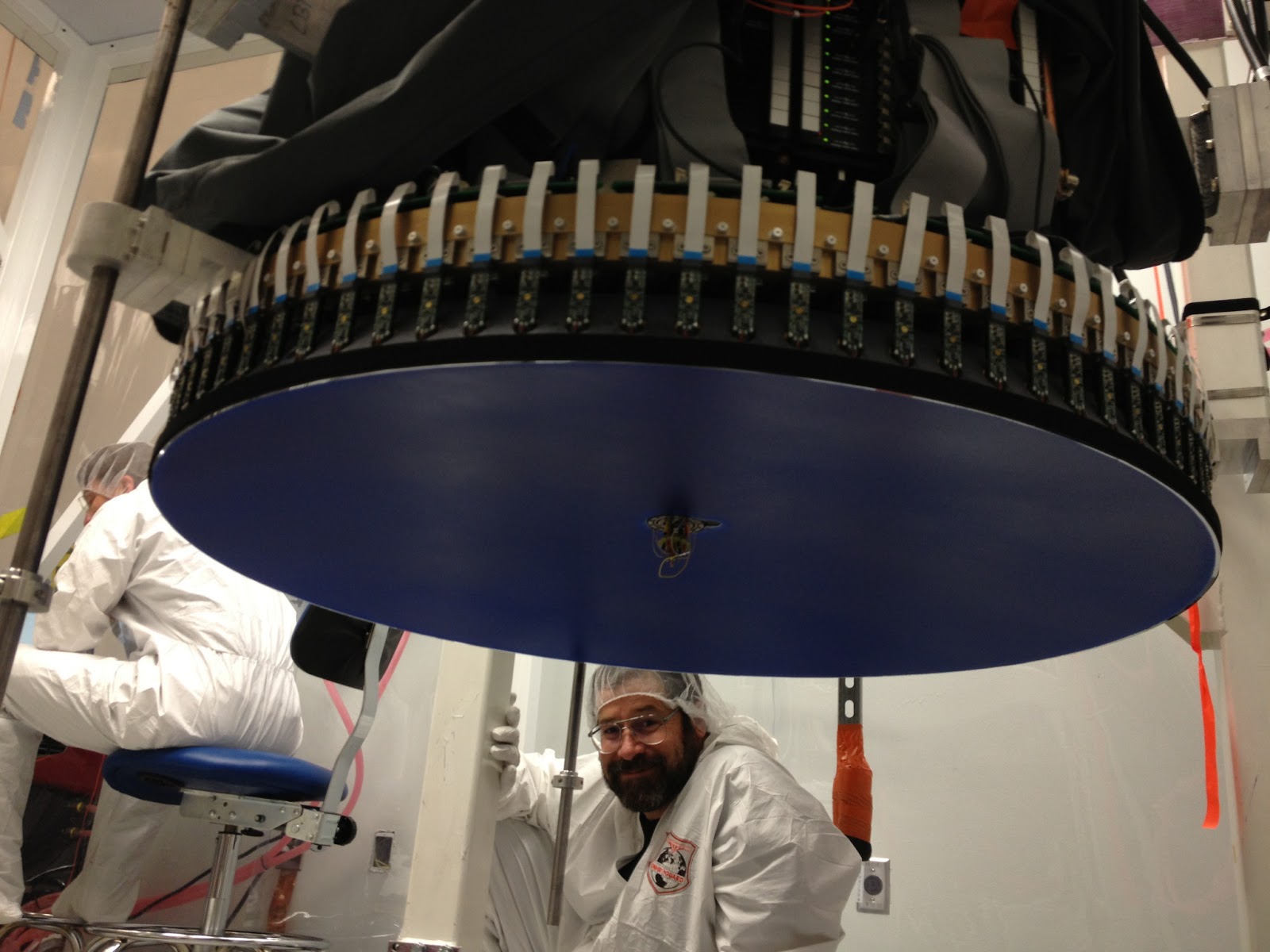The goal of the last phase of AdSec-DX lab work was to end up with a functional adaptive secondary unit integrated in its hub and ready to go on the telescope.
It all started on Monday (Aug 12). After removing the shell mini-skirt, the Opticote layer was removed
with the unit in its zenith pointing orientation. The mini-skirt was then reinstalled.
Opticote protection layer removal
Retention ring installation
On Tuesday, the central cover was installed and the internal spacers adjusted to reach the goal of ~400 µm gap everywhere. The installation was done first in zenith pointing position, but then adjusted after
having moved the unit in horizon pointing position to facilitate the measurement of the gap
between cover and thin shell.
Central cover installation
The unit was sealed and readied
for installation in the hub. So far, so good!
A final check of the unit was performed, setting it flat and slewing the unit at different elevations. After a few successful slews from 90° to 20° elevation, the shell started to display signs of contamination between the shell and its reference in an area close to its outer edge, which would not go away after one more slew and a couple more attempts at setting the shell .
The contamination is seen through the larger gap between the shell and the reference
located at 8pm at the outer edge of the shell
A clear setback for all involved. Unabated, the team just moved on for two more days of work, back to checking the shell and the reference body for the source of contamination and reassembling it again with more testing to follow!
What had just been installed the day before was removed, and the shell gently lowered on its foam tray, No obvious contaminant, like a 50µm size particulate, was found after a thorough examination of both the shell and the reference body. After a tedious removal of all visible FODs (like "foreign object debris"...), most of them around 10µm in size, the unit was reassembled and sealed again.
By Thursday night, the team was successful in
completing the integration of the AdSec and testing the thin shell's
membrane integrity. The results from
these tests were consistent with the measurements made during last
month's AdSec testing campaign.
On Friday evening, after one more day of work, the unit was finally in its hub! This last step went smoothly, and here is the result...
The units in its hub, ready to go on its swing arm
The hub is scheduled to go back on the telescope on Wednesday, Aug 21.
Kudos to the AdSec team of the week:
Guido Brusa, Juan-Carlos Guerra and
Michael Lefebvre!



















